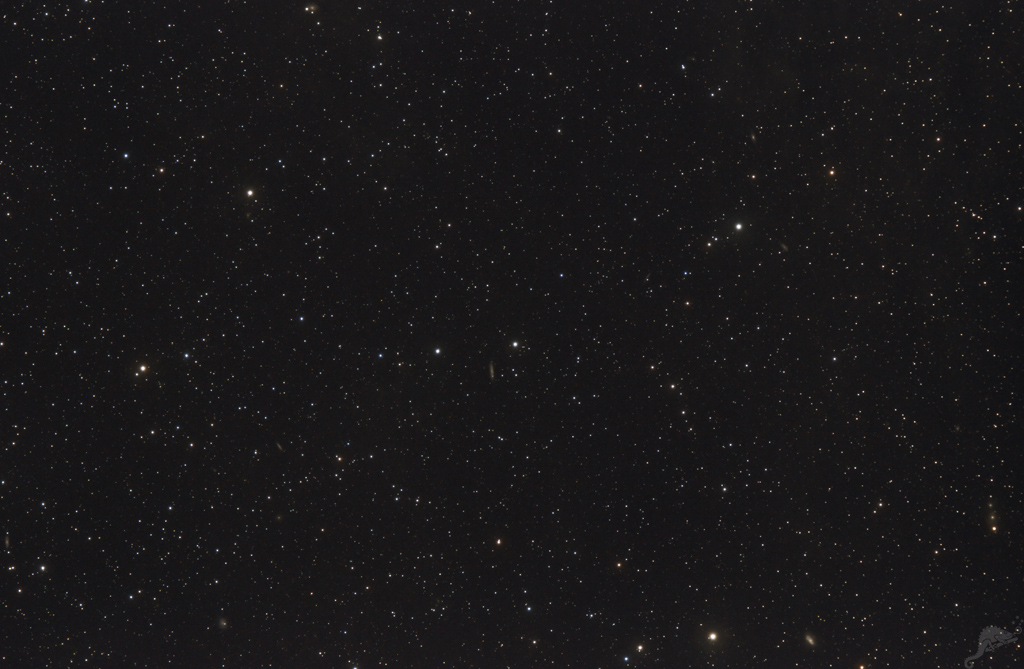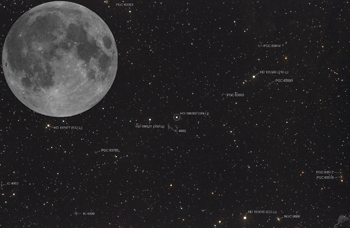 |
CHAMÄLEON + ONJALA OBSERVATORY DeepSky | SITEMAP HOME CHAMÄLEON |
|
 |
|||
| « back to overview cluster | Load
higher resolution (1800 x 1200 Pixel 3500 x 2300
Pixel) |
Object description |

Our image shows a relatively starless region in the constellation Peacock. Directly in the center of the image at the coordinates RA = 19h 49m 6.43s and DE = -70 degrees 11' 16.7" stands an inconspicuous star of the nearly 9th magnitude - HD 186 302. Its distance to the solar system is known quite precisely, it is given with 184.1 +/- 0.3 light-years.
The star is after HD 162 826 in the constellation Hercules only the second, exactly investigated, twin of our Sun. Whereby the definition twin does not only mean that HD 168 302 is a sunlike star, but a star which was formed at the same time as our sun from the same cloud of dust and molecules.
Star formation is simply explained: A gas and molecule cloud collapses under the influence of its own gravity and in the center a star is formed. Now these molecular clouds are generally very large, and so not only one star is formed but many stars at the same time, which together form an open star cluster, e.g. the Pleiades. The stars stand shortly after their birth in a small volume of space, interfere there mutually and the stars distribute themselves thereby within a few hundred million years across the Milky Way.
So a real solar twin must not only have exactly the same age of 4.57 billion years of our sun, but also the same chemical composition. But how to find such a twin among the maybe 400 billion stars in our Milky Way and why to look for it at all ?
 |
The
why is easy to explain: If one looks for
Earth-like exoplanets, it makes sense to look for stars that formed together
with our Sun from the same molecular cloud. Because in the case of our Sun, we
know for sure that at least one life-bearing planet also formed. You can read exactly how astronomer Vardan Adibekyan and his colleagues at the University of Porto went about it in detail in an article by Franziska Konitzer starting on page 18 in Sterne & Weltraum, May 2019. The original publication by Adibekyan and his team can be found here. The many background galaxies in our image have magnitudes between the 13th and 16th magnitudes. The galaxy IC 4892, which lies directly southeast of HD 186 302, has a magnitude 14.6th magnitude magnitude. The distance is given as 160 million light years and classified as type Sbc. Click here or the thumbnail to load a large annoted image and a size comparison to the full moon. |
 |
 |
 |
 |
 |
 |
 |
| Sun | Moon | Solar System | DeepSky | Widefield | Miscellaneous | Spec. Projects |